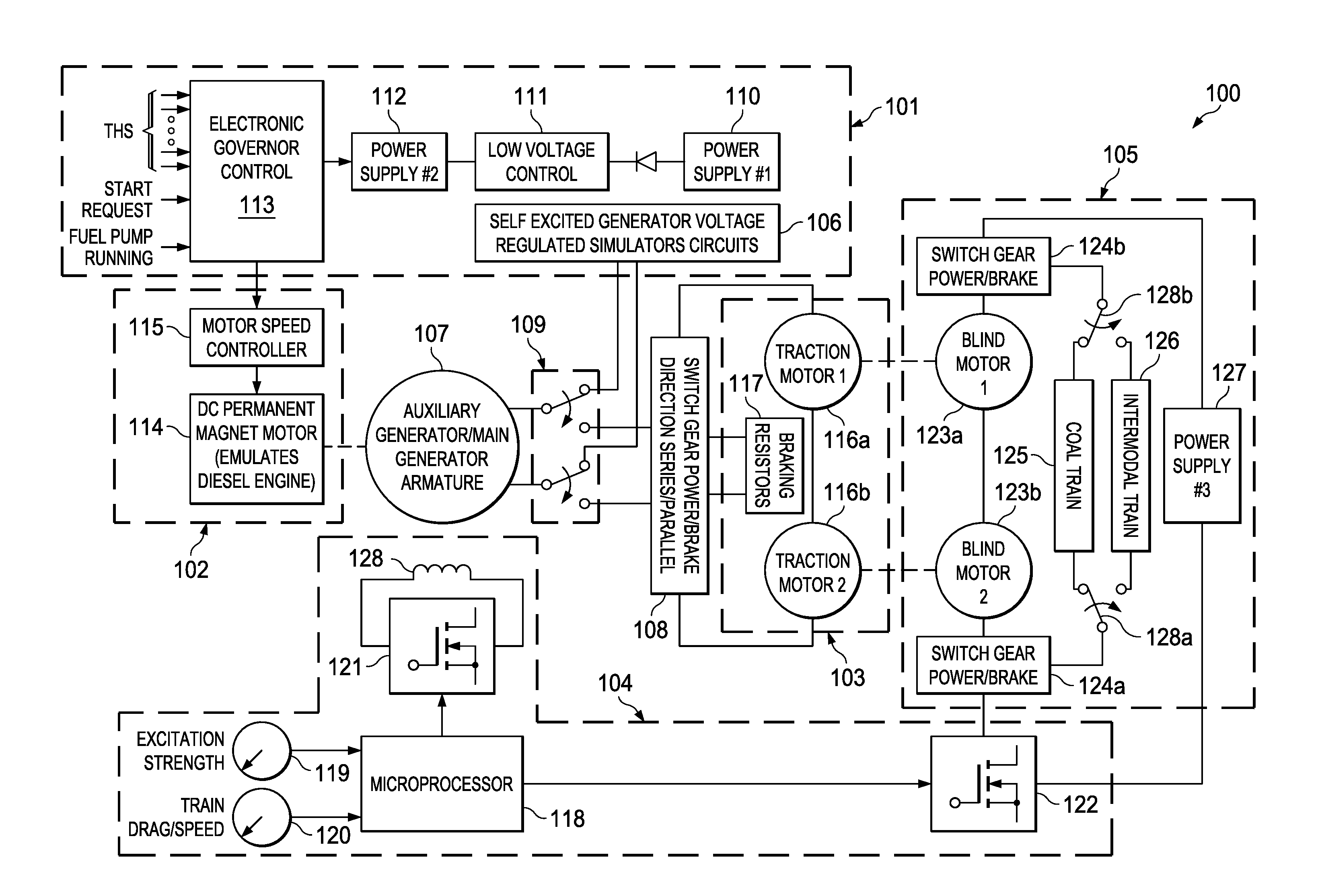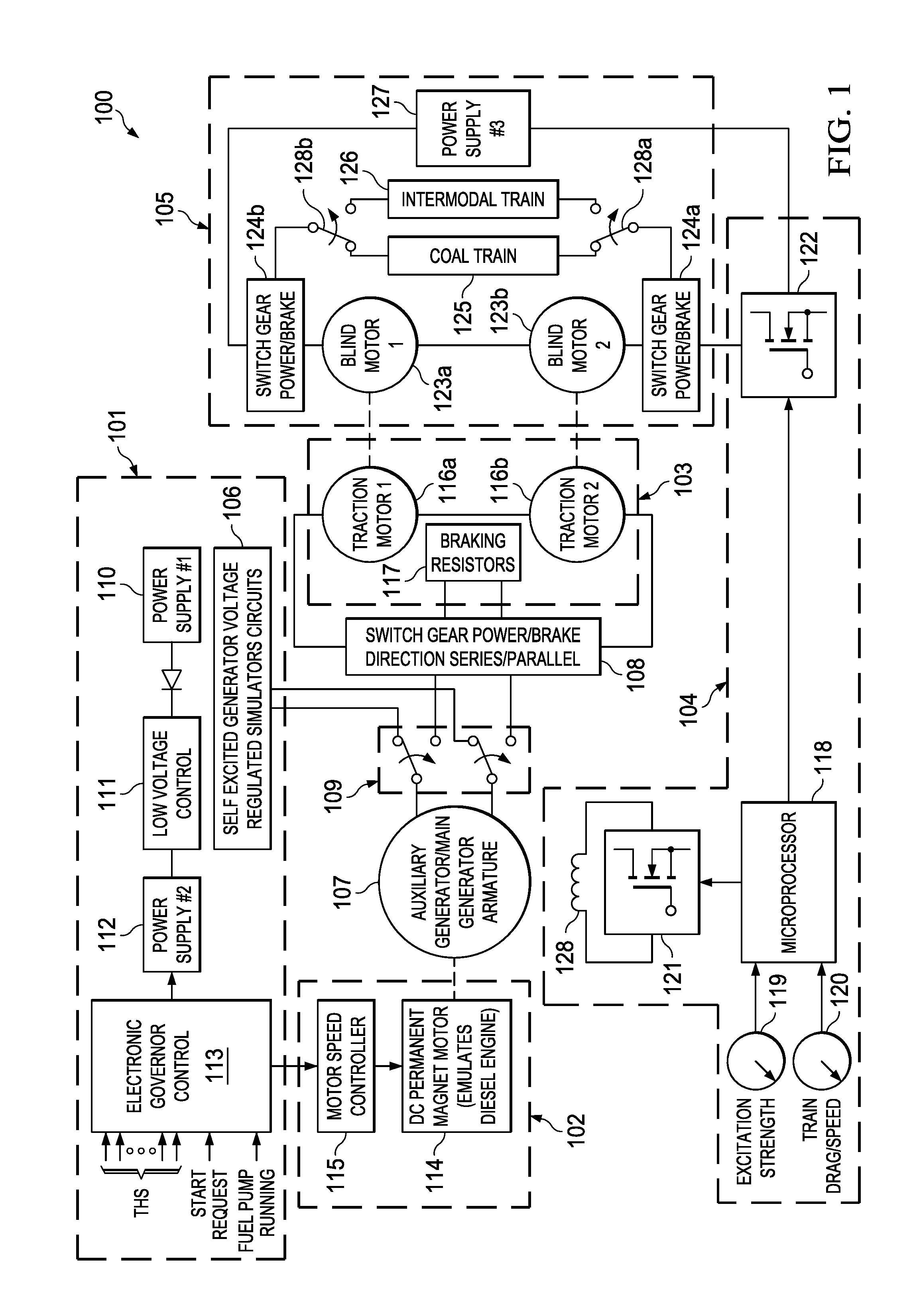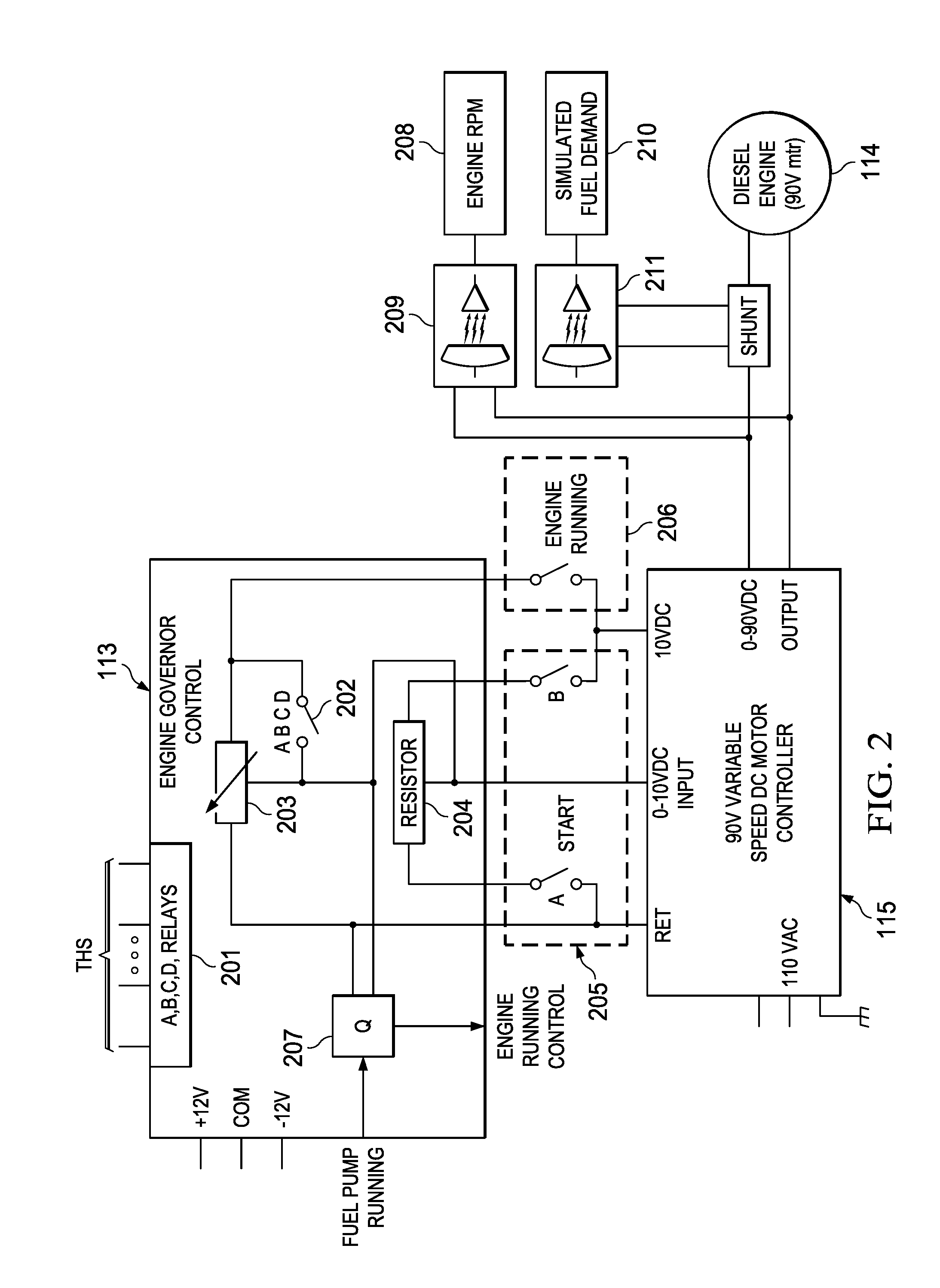Locomotive electrical systems simulator
a technology for electrical systems and simulators, applied in locomotives, instruments, transportation and packaging, etc., can solve problems such as lack of generators and motors in simulators, students are not provided with first-hand experience, and the number of simulators available to a typical class is normally limited
- Summary
- Abstract
- Description
- Claims
- Application Information
AI Technical Summary
Benefits of technology
Problems solved by technology
Method used
Image
Examples
Embodiment Construction
[0046]The principles of the present invention and their advantages are best understood by referring to the illustrated embodiment depicted in FIGS. 1-33 of the drawings.
[0047]FIG. 1 is a high level functional block diagram of a locomotive electrical system training rack (“locomotive electrical system simulator” or “simulator system”) 100 embodying the principles of the present invention. Generally, simulator 100 emulates operations of each of the primary electrical systems of a typical locomotive, including the low voltage control systems, the diesel engine, the traction motors, the main and auxiliary generators, and the high voltage systems. Advantageously, simulator 100 can emulate locomotive electrical system states corresponding to forward and reverse locomotive movements, dynamic braking conditions, changes in notches (i.e., locomotive speed), changes in drag on a moving locomotive (i.e., changes in grade), and different loading (e.g., coal trains, intermodal trains).
[0048]In t...
PUM
 Login to View More
Login to View More Abstract
Description
Claims
Application Information
 Login to View More
Login to View More - R&D
- Intellectual Property
- Life Sciences
- Materials
- Tech Scout
- Unparalleled Data Quality
- Higher Quality Content
- 60% Fewer Hallucinations
Browse by: Latest US Patents, China's latest patents, Technical Efficacy Thesaurus, Application Domain, Technology Topic, Popular Technical Reports.
© 2025 PatSnap. All rights reserved.Legal|Privacy policy|Modern Slavery Act Transparency Statement|Sitemap|About US| Contact US: help@patsnap.com



